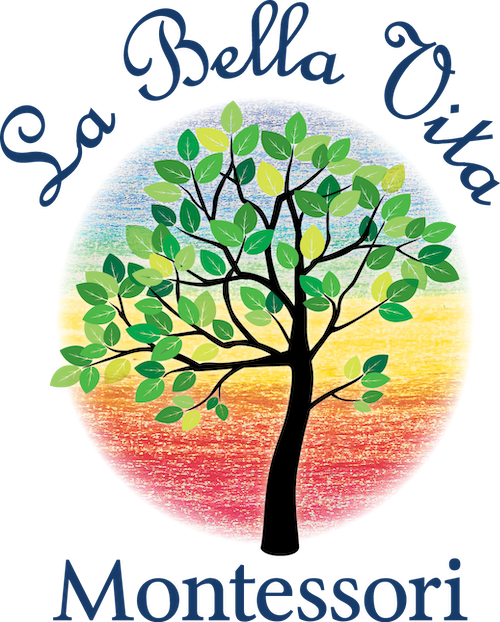
We integrate the arts in our Montessori program not just because they support other academic learning, although they certainly do. The arts demonstrate the ancient human need for communication, with evidence of music, visual arts, dance and theatre from the earliest documented societies.
Because we are driven intrinsically to communicate, humans develop increasingly subtle and complicated means of doing so. The arts support our ability to communicate in nonlinguistic modes, to enrich and expand the complexity and nuances of that which we hope to communicate. We want to create environments within which children develop the ability to create meaning through repeated opportunities both to internalize and to express it. The arts allow for purposeful meaning-making. When students can integrate social, emotional, physical and intellectual understanding through the creation or experience of art, that understanding is made more personal, more responsive and more lasting than when students receive it through a single modality.
The arts offer experiences for learners to expand their social, emotional and intellectual expertise, as a process of both creating and communicating meaning and understanding across a diverse range of concepts and ideas. Socially, the arts offer a pathway for diverse cultural experiences, for comparing and contrasting between multiple modalities conveying the same themes or between similar modalities conveying different themes. Experiences in the arts provide distinct opportunities for collaboration and for practical experience in working in groups with diverse contributions. Emotionally, the arts require risk-taking and courage in making visible creative and divergent thinking. Experiences in the arts give learners multiple languages for conveying understanding, building confidence and allowing teachers more focused lenses into student thinking. The skill development that comes with disciplined practice supports learners’ definition of persistence and self-capacity, and offer learners engaging paths to developing their ability to attend to new content . Intellectually, the arts allow interest-driven structures for deeper understanding. Visual arts, theatre, music and dance require complex symbolic representation that interweave cognitive and emotional domains. Further, experiences in the arts to expand meaning-making allow learners to think creatively and critically, noticing and documenting patterns, practicing analysis and developing the capacity to discern subtle differences in meaning. Engaging in the arts allows learners to expand complex understanding, through adopting multiple perspectives or composing original design.

Our Approach to Art Appreciation
Most approaches to arts education, as with typical approaches to literature, are relatively technical. They offer students historical context to help make sense of a painting or sculpture. Ultimately, they often try to teach students something about the technique of the art, such as principles of composition, of materials, or of schools of aesthetics that may have informed the artist. Our approach to art appreciation minimizes these appeals art history, technique, and aesthetic schools. Instead it teaches students to approach the fine arts in the same way that they can approach books and movies: by directly experiencing the excitement and poignancy of the content of the artwork.
Similar to observation in the sciences, the process of “reading” a painting starts with direct observation, and involves suggesting more abstract possibilities followed by testing those “hypothesis” with evidence from the painting. The microcosm of the scientific method used in “reading” comes in the form of solving the mystery of what is happening in the story. Likewise, similar to literature, visual art has characters and a story. However, while the role of a student reading a novel is to grasp the meaning of the words and imagine the world created, the role of a student reading a painting is the reverse: to grasp the meaning of the images and provide the words—their words—to the world they encounter. There is a clear story in the artwork, but they need to be the “author” to fully read and experience the story.
Students learn a series of techniques—such as attending to and imitating a depicted character’s pose, or following a character’s gaze to see where they are looking, or coming up with a title for a painting, or putting a thought bubble or dialog bubble to a character—that enable them to slowly, observationally piece together what is happening in a work of art. They come to notice that a boy’s posture indicates that he is intrigued, that the curve of his hand means he is nervous, that his facial expression means that he excited—and that this is very different from the other boy he is sitting next to. They learn to observe and analyze the human element in the finest details of a scene, experiencing its meaning by putting words to its story.
Finally, the student comes to appreciate the full meaning of a painting or a sculpture, and personally connects with it. Finding a personal connection to the theme gives students a real understanding of the work and, more importantly, an understanding of how the insight of the theme fits into their own life. Connecting the artwork’s theme to the same kind of moments in literature (and sometimes history) is extremely valuable in the student’s understanding of the abstract idea, but a personal connection is what completes the powerfully emotional experience for the student. This process of self-reflection—of seeing how the abstract meaning contributes insight to one’s own life—is also essential to the subject of literature. The difference between art and literature, in this respect, is that the meaning of a novel takes the duration of the work to experience and may take weeks to come to fruition, while that of an artwork can be grasped in one class period.

